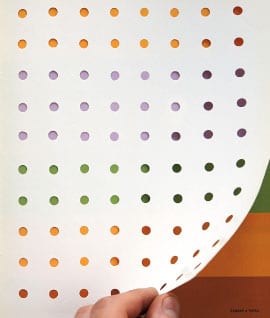From Art Journal 71, no. 3 (Fall 2012)
Perhaps minor among reasons to celebrate the fact that the world did not end as predicted on 12.12.12 is that Art Journal is a little behind in its publication schedule. The apocalyptic reprieve buys us time to get out the Fall and Winter issues. But if the general implosion failed to show up at the end of the year, there was a kind of mini-meltdown in the art world. The art market set new, previously unimaginable record prices; and while new market highs and attendant commentary are regular occurrences, this year the money seemed to reach some kind of critical mass, bowling over even sophisticated art insiders. Among them, the critic Dave Hickey and the art world anthropologist Sarah Thornton officially withdrew from their occupations in disgust with the current state of affairs.
Other commentators “unmasked” (often on the most public platforms, notably the New York Times) contemporary art as a hoax played on an innocent public solely for financial gain. Art critics chimed in, denying the emperor’s nakedness, but conceding his semi-obscenity, attempting to parse artists and institutions into the acceptable and the venal. Perhaps more irritating than the undeniable role of money has been the dominance of talk about money, the fact that art fairs and auction prices and Damien Hirst occupy almost all of our dwindling discourse about art. Nothing can seemingly compete with the overwhelming presence and prurience of money’s role. But the economic stories play from a single perspective: rarely do we read about the ways in which a wider range of artists experience these contemporary conditions, and how these conditions may or may not affect art making. Even modestly successful artists are experiencing historical shifts in the pressure to run a studio more professionally, to manage their careers, to make more work for increasing numbers of international galleries and art fairs. Some artists resist these pressures, but the majority of artists who make a living selling art have to respond in some way. Perhaps even less acknowledged is the situation of 99% of artists, who do not make money from their art. How do they survive, do they continue to make art, are there alternate sources of reward and recognition available to them?
One major source of reward, increasingly scarce, is supposed to be art criticism and scholarship that devote space to figures other than the lurid top ten, that see art as more than its bottom line. In this vein, Art Journal and a few other academic journals continue to play an important role as venues for writing on and art by artists who don’t register as celebrities or money magnets. Not to set up “alternative” academic niches within the market, but simply to take art seriously as art—with all of its attendant revelations of perspective, materialism, production, politics, feeling, physicality, and ideas. In this issue we make room for Gary Winogrand, Lygia Pape, Tuan Andrew Nguyen, Edgar Heap of Birds, Hans Haacke, Alan Sonfist, Richard Budelis, Newton and Helen Harrison, Fred Sandback, Agnes Martin, and others.

